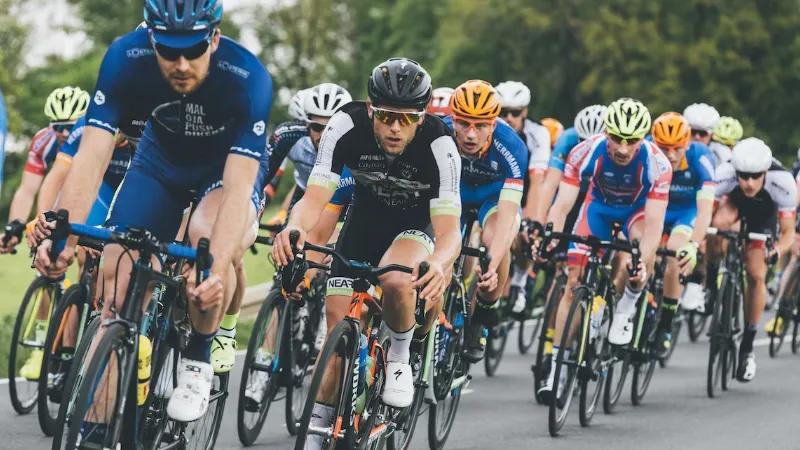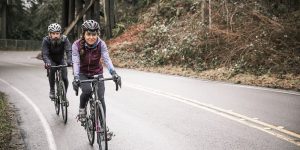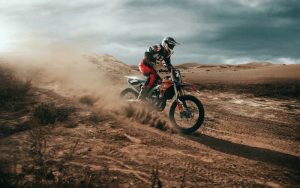Cycling enthusiasts struggle with cadence. Here, I’m going to tell you what is Cycling cadence.
Cycling cadence is the speed at which you turn the pedals. It’s expressed in rpm (revolutions per minute) and can be measured with inexpensive sensors.
We naturally gravitate toward particular cadences when cycling because we all know that pedaling at one cadence feels very different from spinning at another.
However, very few of us truly comprehend how cadence affects our cycling efficiency, and the available data is highly ambiguous.
Table of Contents
What is Cadence?
Fundamentally, cadence is very straightforward: it is the number of rotations your pedals make each minute while you ride. However, it doesn’t take much time cycling to notice that different riders frequently pedal at different speeds.
Professional cyclists appear to pedal quickly when you watch them compete, especially on flat terrain. They will frequently rotate at speeds of 100 or more revolutions per minute (rpm), which is a very high cadence.
On a climb, the majority will be pedaling slightly more slowly than the average cyclist, but still quite quickly. Chris Froome’s extreme climbing technique is a perfect illustration of this, with a cadence that is frequently still around 100 rpm even when going uphill.
On the other hand, a fit amateur might pedal at 80 to 90 rpm, while the typical recreational rider will typically pedal much more slowly, at around 60 rpm.
What difference does it make if you have a high or low cadence? Examining cadence in greater detail will help you understand why it’s important, how it’s measured, and whether there is a perfect cadence to strive for.
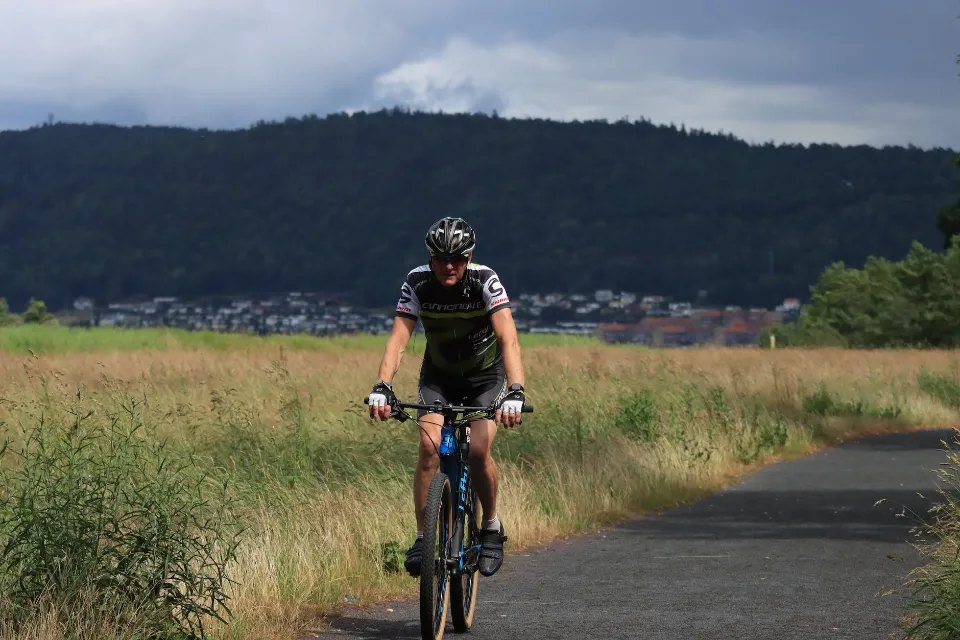
Why is Cadence Important?
Cadence is a key measurement because it’s a vital component in the power you put out on the bike. After all, power is calculated by multiplying your pedal-pushing effort (torque) by your pedal-turning cadence.
Cycling at a lower cadence typically puts more strain on your muscles, while a higher cadence shifts the load more to your cardiovascular system, says Dr Xavier Disley of AeroCoach, who has researched cycling efficiency and cadence, working with a number of elite cyclists.
A rider who is wiry will probably want to push a lower gear at higher revs, whereas a rider who is more muscular will likely feel more comfortable at a lower cadence. Disley notes that simply turning the legs requires energy, which varies depending on your physique.
Experiments have shown that trying to ride faster at a lower cadence (in a high/difficult gear) is more likely to lead to muscle strains and muscle soreness after a ride than achieving the same speed at a faster cadence, but with a lower load.
On the other hand, if your cadence is too fast, your pelvis may start to rock, which could reduce your pedaling efficiency. Also, you’ll get tired easily.
Should I Train at Different Cadences?
Yes, all types of cyclists will inevitably come across situations that call for a change in cadence, like hard accelerations out of turns or steep climbs. If you’re unprepared to handle them, these pivotal moments can be extremely exhausting. Acclimating to a variety of cadences during training can help you be prepared on race day because practice and experience make perfect.
Exercises that increase cadence also enhance the general effectiveness and quality of your pedal stroke. In fact, studies of professional cyclists have shown that some elite riders are actually most efficient at high cadence, despite the previously-discussed evidence that low cadence is most economical. This is probably because professional athletes have fluid movement patterns and good form that they have honed through practice. All of these factors make simple cadence drills beneficial for all riders.
How to Improve Your Cadence?
To practice movement patterns and increase efficiency, cadence drills can be added to almost any easy or moderate workout. The Base Period is a great time for this because it is simpler to establish fluidity early in the season than it is to change long-standing habits later.
Cadence drills can be incorporated at any point during your season, despite the fact that they are typically thought of as a base season focus. The purpose of cadence drills is to improve form, never to produce more power overall. Include them in steady-state or low-risk riding where they won’t interfere with your ability to hit a power target. At first, you’ll probably feel awkward, but things can change very quickly. Here are a few of our top picks.
- Endurance SpinningRaising your natural, self-selected cadence is a great practice exercise for this drill. Increase your cadence by three to five rpm while you are riding and hold for five minutes. Reduce your cadence if your heart rate rises by more than a few beats per minute. Pedal normally for a few minutes after the exercise is finished before repeating.
- Single-Leg FocusSingle-leg focus exercises are best carried out on a stationary bike in order to improve your ability to exert more power throughout the entire pedal stroke. Give one leg your full focus for 90 seconds while paying close attention to how you lightly pull your foot across the bottom, lift your knee a little bit, and then softly kick over the top. After one minute of pedaling, turn your attention to the other leg.
- Isolated Leg TrainingIsolated leg drills work to improve the ability to exert force throughout the entire pedal stroke, similar to single-leg drills. During a low-power interval while using the trainer, completely unclip one foot and rest it on the seat, a stool, or anything else that will allow you to keep it safely out of the way. Pedal with one leg for 10–20 seconds while starting with a slow cadence. Observe the bottom and top of the pedal stroke very carefully. Any deadspots in your pedaling will result in a “knocking” sound. Maintain tension on the chain, change legs whenever your form deteriorates, and refrain from developing bad habits just to gain an extra five or ten seconds.
- Kick and Pull
These improve your capacity to keep tension throughout the top and bottom quadrants of the pedal stroke, which are the weakest. Kicking your toes into the fronts of your shoes as your knee approaches top-dead center and pulling your heels into the backs of your shoes as your feet approach bottom-dead center are known as the “kick and pull” technique. Focus on just the kick for 30–60 seconds, then just the pull for 30–60 seconds, and finally both for 30–60 seconds at once.
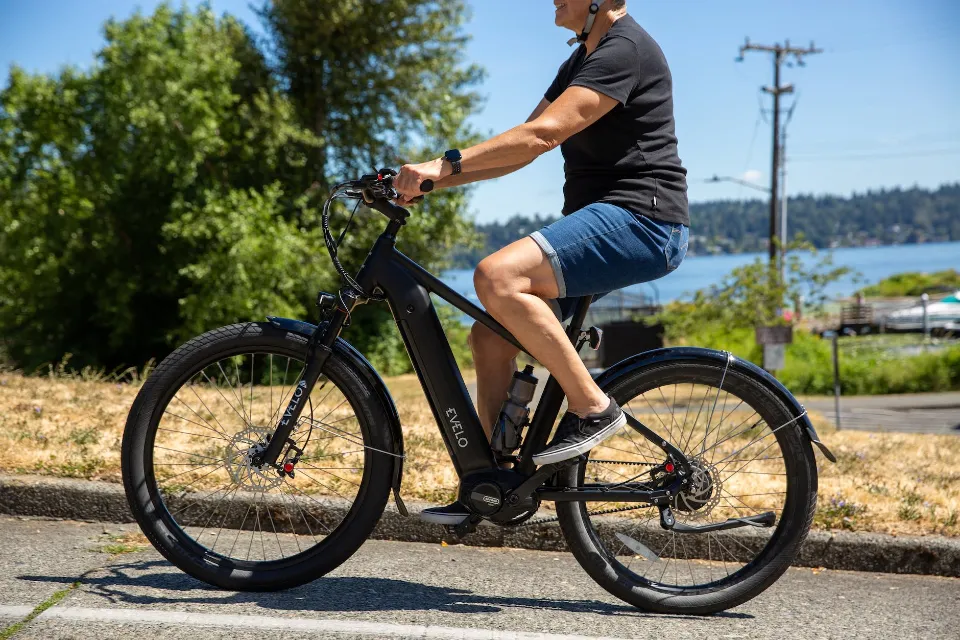
What Should My Cadence Be?
If you are new to cycling, you should work on determining the ideal cadence at which you can operate at peak effectiveness. Based on each individual’s physical make-up and cardiovascular health, this will differ.
Because they have more muscle mass and can easily push the pedals, cyclists who are well-built are much more at ease riding at a lower cadence.
A lean rider with good cardiovascular health will choose to pedal faster while using less force per stroke.
If you’re a beginner, you’re more likely to pedal more slowly because you won’t be able to handle the strain that pedaling at a higher cadence puts on your cardiovascular system.
As a general rule, remember to increase your cadence if your legs begin to tire before you start gasping for air.
Lower your cadence if your legs fail before your lungs do. As you seek to determine the ideal cadence for yourself, practice will help you much more readily grasp this fundamental concept of cadence.
The appropriate cadence for each individual when they first begin will depend on a variety of factors because every person is unique. On the other hand, the majority of beginners begin at speeds of 50 to 60 RPM.
You will probably start out at this speed if you are new to the sport.
Furthermore, you can work on improving your pedaling technique and increasing your cadence to gradually raise this value over several days.
To prevent soreness and fatigue in your muscles, you should ideally aim for a cadence of about 80-85 RPM.
Despite the overwhelming evidence that suggests cycling with a higher cadence is more efficient, not all cyclists may benefit from this theory.
A study1 by Formenti et al. investigated the impact of cadence on skeletal muscle oxygenation during cycling.
Nine healthy participants in the study were instructed to pedal at various cadences while having varying levels of cycling experience. During the course of this study, their metabolic and cardiopulmonary responses were observed.
According to the study’s findings, the efficiency of amateur cyclists began to decline as cadences were raised above 90 RPM.
Thus, while riding at a cadence of 90 RPM or higher may be effective for a professional cyclist, it may not be the best choice for a beginner.
This is so that fatigue doesn’t set in until a certain level of cadence, which tends to shift the load on your cardiovascular system.
The rider’s level of experience is most likely the most crucial factor when it comes to cadence. Here is a simple table that breaks down the average cadence of a cyclist at different points in their career:
| Type of Cyclist | Average Cadence RPM |
| Beginner | 50-60RPM |
| Intermediate | 60-80RPM |
| Experienced | 80-100RPM |
| Professional | 100-120RPM |
How Do I Choose the Right Cadence?
There isn’t a perfect cadence that works for everyone, in reality.
The ideal cadence varies from person to person and is largely based on the cyclist’s cycling experience, muscle fiber type, and cardiovascular fitness, although road conditions and speed also play a significant role.
If the wind is pushing you forward, you will need to change the gear to find the ideal cadence for you.
Similar to this, if you are cycling uphill, you will need to change your cadence to get to the top.
This simply demonstrates how cadence depends on a variety of variables, and how each cyclist must determine which gear and cadence are best for their ride.
In the end, the more experience you have cycling under various conditions, the more accurately you can choose the right cadence for yourself.
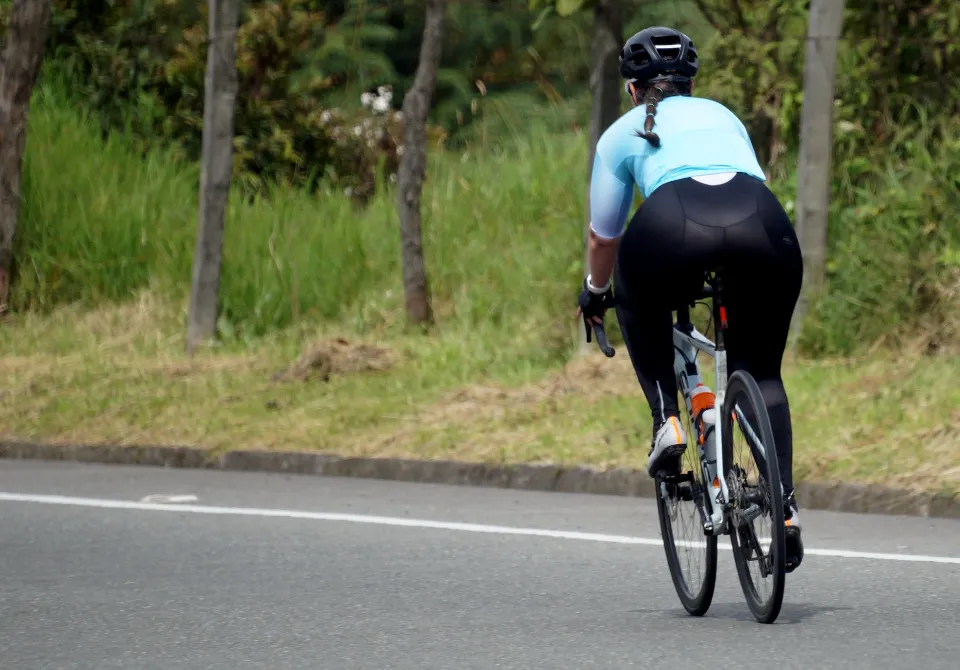
How Do I Measure My Cycling Cadence?
You should be aware of your current cycling cadence before looking into ways to increase it.
After all, how will you know whether you are cycling at a cadence of 70 RPM or 90 RPM?
Count Your Pedals
Counting the number of times your leg presses down on the pedal over the course of thirty seconds will allow you to determine your cadence even though some cadence tracking devices can provide a more accurate reading.
On a flat piece of land without any speed bumps or traffic lights, this should be done while riding.
Your cadence will be determined by multiplying the final number by two.
If you find it challenging to count for thirty seconds while cycling, just count for ten seconds, multiply that number by six, and that will give you your cadence.
In order to determine your cadence with greater accuracy, you should ideally repeat this process twice more and then average the results.
Keep in mind that it’s important to try out various cadences before you find the one that works best for you. While some people may benefit from a certain cadence, others might not.
The same cadence might not be appropriate for you in every circumstance, too.
Depending on the surface you are riding on, you may need to learn how to change your cadence. When you become accustomed to how various cadences feel, you’ll feel more at ease switching your cadence on the fly to one that suits you better.
Use a Cadence Sensor
Some bicycles also have sensors mounted on the crank that assist you in determining your cadence.
With the aid of these sensors, you can measure your cadence while riding a bike in real time with a lot more accuracy.
While riding, if you notice that your cadence is dropping, just accelerate your pedaling or shift into a lower gear.
Investing in a cadence sensor will allow you to monitor your efficiency while riding, which will help you increase it.
You can gain a lot more understanding of your cycling workout and use the information to identify ways to increase your efficiency by combining the data from your cadence sensor with that from your fitness tracking device.
The Bottom Line: Cycling Cadence
You can improve your cadence training regularly and ride more effectively, resolutely, and quickly.
Simple high-cadence drills that you practice will put more stress on your heart, improving your overall fitness and physique and enabling you to increase your endurance.
Read about

